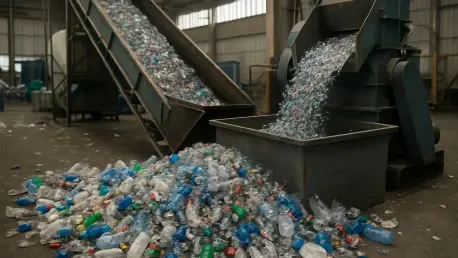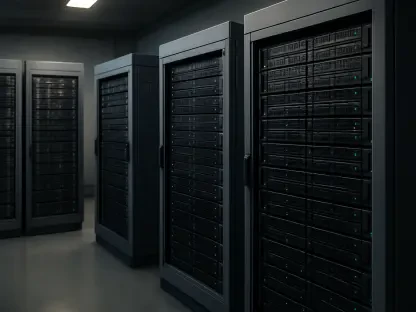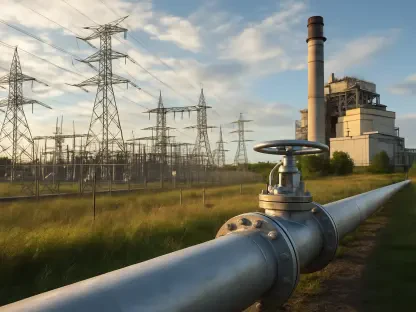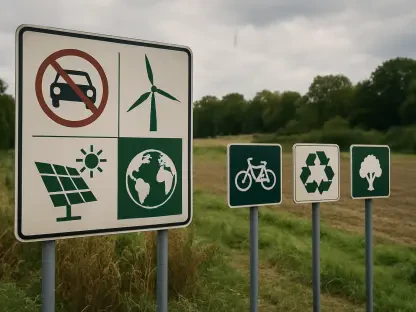Every day, mountains of plastic waste pile up across the globe, with over 300 million tons produced annually, yet less than 10% ever gets recycled. Picture a single-use plastic bag, tossed after a quick grocery run, lingering in a landfill for centuries or drifting into the ocean to harm marine life, highlighting the urgent need for innovative solutions. This stark reality underscores a pressing question: could a groundbreaking technology turn this waste back into valuable resources? Chemical recycling, a process that breaks plastics down to their molecular roots, offers a glimmer of hope. This article dives into whether this innovation can truly address the escalating plastic pollution crisis or if it merely shifts the burden elsewhere.
Unraveling the Plastic Puzzle: A New Frontier in Waste Management
The sheer scale of plastic waste demands urgent solutions, as traditional recycling methods often fall short. Mechanical recycling, while useful for uniform materials like PET bottles, struggles with mixed plastics or contaminated items such as food-soiled containers. Chemical recycling steps in with a promise to transform even the most challenging plastics—think flimsy films or multilayered packaging—back into raw materials for new products. This technology could redefine waste management by targeting items previously deemed unrecyclable, opening a potential pathway to a circular economy.
Yet, skepticism lingers around its feasibility and impact. Unlike mechanical methods, chemical recycling requires complex processes involving heat or solvents, raising questions about energy costs and environmental footprints. As stakeholders grapple with balancing innovation against practicality, the spotlight falls on whether this approach can scale effectively without creating new problems. The stakes are high, with plastic pollution choking ecosystems and public demand for sustainable solutions growing louder by the day.
The Plastic Waste Crisis: Why Chemical Recycling Matters Now
Plastic waste has reached catastrophic levels, with an estimated 8 million tons entering oceans yearly, threatening marine biodiversity and human health. Landfills overflow, and incineration releases toxic pollutants, while mechanical recycling captures only a fraction of the deluge due to limitations with mixed or degraded materials. This crisis has intensified pressure on governments and corporations to act, as consumers increasingly reject single-use plastics and advocate for systemic change.
In response, initiatives like the U.S. Plastics Pact (USPP) have emerged, uniting major brands to rethink packaging and waste strategies. Chemical recycling has gained traction as a potential ally in this fight, offering a way to process plastics that evade traditional systems. Its relevance is undeniable, especially as regulatory bodies and communities push for reduced landfill dependency and cleaner environments, positioning this technology as a critical piece of the puzzle in addressing an ever-worsening problem.
Breaking Down Chemical Recycling: Promises and Pitfalls
At its core, chemical recycling uses advanced techniques to dismantle plastics into their basic molecular components, allowing the creation of high-quality materials for diverse uses, including food-safe packaging. Unlike mechanical recycling’s physical reshaping, processes involving heat or chemical solvents can handle complex items like flexible films, often turning waste into resources fit for medical-grade applications. Facilities such as ExxonMobil’s plant in Baytown, Texas, operational for a few years now, demonstrate this by processing significant volumes of otherwise unrecyclable plastics.
The benefits are compelling, particularly for tackling items that clog waste streams, like multilayered snack wrappers. This technology could lessen reliance on virgin plastic, bolstering recycled material markets. However, challenges loom large—high energy consumption and potential emissions from chemical processes spark concern among environmental watchdogs. Health risks tied to handling hazardous substances also cast a shadow, prompting calls for stringent oversight to ensure safety and sustainability.
Real-world data paints a mixed picture. While some facilities report success in recycling tough plastics, critics point to inconsistent outcomes and the lack of comprehensive studies on long-term environmental impacts. The USPP has cautioned against over-reliance on this method, urging that it complement rather than replace other recycling strategies. This duality of promise and peril shapes the ongoing debate over its role in waste management systems.
Voices from the Field: Expert Insights and Community Concerns
Diverse perspectives illuminate the contentious landscape of chemical recycling, with industry leaders championing its economic potential and scalability. Federal figures, including EPA Administrator Lee Zeldin, have shown interest through site visits and policy discussions, viewing it as a driver for innovation. Major corporations argue that facilities can create jobs while addressing waste, pointing to operational plants as proof of concept in transforming discarded plastics into valuable resources.
Conversely, environmental activists and local communities raise alarms about pollution and health risks, particularly near proposed or existing plants. Stories from residents in already burdened areas highlight fears of exacerbated air and water contamination, fueling calls for environmental justice. Advocacy groups stress that without careful siting—guided by tools like California’s CalEnviroScreen—vulnerable populations could bear the brunt of industrial expansion, a concern echoed in public forums and protests.
Bridging these views, the USPP advocates for a balanced approach, positioning chemical recycling as a supplementary tool rather than a panacea. Experts within the pact emphasize the need for robust safeguards and community engagement to mitigate risks. This clash of optimism and caution underscores a broader tension: harnessing technological advances must not come at the expense of equity or environmental health, a principle that continues to guide policy debates.
Charting a Responsible Path: Strategies for Sustainable Integration
Navigating the complexities of chemical recycling requires a structured framework to ensure it serves the greater good. The USPP outlines a clear hierarchy, prioritizing waste reduction and mechanical recycling before turning to chemical methods for niche, hard-to-process materials. This approach prevents the overuse of energy-intensive technologies for items like PET bottles, which already have established recycling streams, focusing instead on plastics with no viable alternatives.
Safeguards form a critical pillar, with recommendations for strict emissions controls and safe chemical handling to protect surrounding areas. Transparency is equally vital—third-party lifecycle assessments and standardized metrics, such as mass balance calculations, are urged to validate environmental claims. Additionally, supporting environmental justice means leveraging federal resources to avoid siting facilities in overburdened communities and ensuring funds for cleanup if mishaps occur, a strategy aimed at building trust and accountability.
This roadmap offers practical steps for policymakers and industries to integrate chemical recycling responsibly. By aligning innovation with stringent standards, the potential exists to address gaps in current systems without compromising broader sustainability goals. As efforts ramp up from 2025 to 2027, collaboration across sectors will be essential to refine processes, monitor impacts, and adapt strategies based on emerging data and community feedback.
Reflecting on a Path Forward
Looking back, the journey to address plastic waste through chemical recycling revealed both immense potential and significant hurdles. Discussions with experts, communities, and industry players painted a nuanced picture of a technology that could transform hard-to-recycle plastics into valuable resources. Yet, the shadow of environmental and health risks lingered, reminding all involved that innovation demanded careful stewardship.
The next steps hinged on actionable commitments—enforcing rigorous standards, prioritizing waste reduction over technological fixes, and safeguarding vulnerable populations from industrial burdens. Policymakers and corporations had to invest in transparent data collection and independent assessments to build public confidence. Only through such deliberate efforts could chemical recycling carve a meaningful role in the fight against plastic pollution, ensuring that progress did not come at the expense of the planet or its people.









